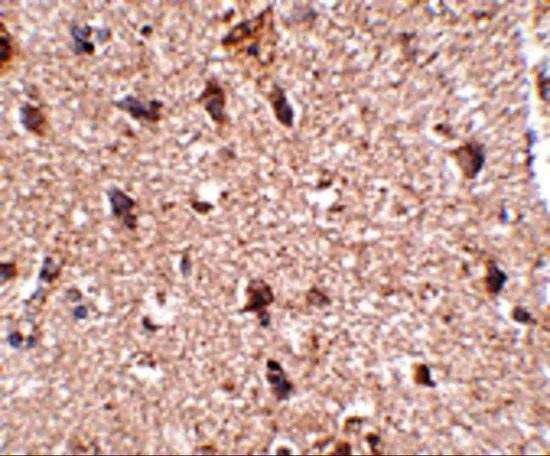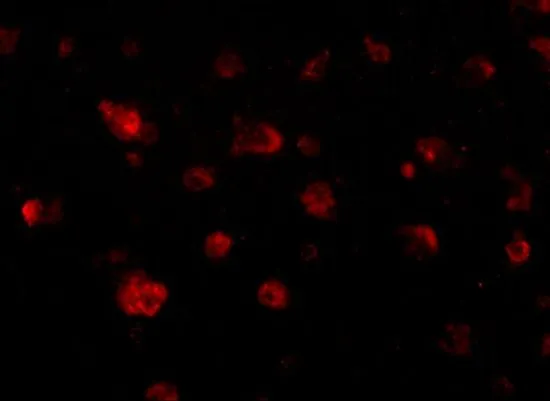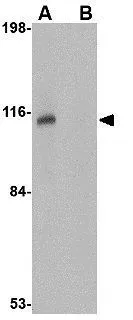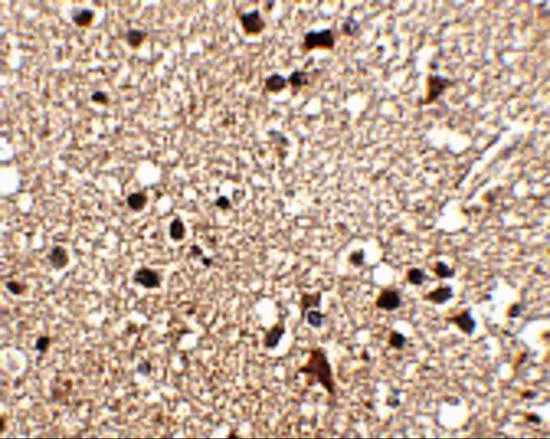
IHC-P analysis of human brain tissue using GTX85363 JPH3 antibody. Working concentration : 2.5 microg/ml
JPH3 antibody
GTX85363
ApplicationsWestern Blot, ELISA, ImmunoHistoChemistry, ImmunoHistoChemistry Paraffin
Product group Antibodies
ReactivityHuman, Mouse, Rat
TargetJPH3
Overview
- SupplierGeneTex
- Product NameJPH3 antibody
- Delivery Days Customer9
- Application Supplier NoteWB: 1 microg/mL. IHC-P: 2.5 microg/mL. *Optimal dilutions/concentrations should be determined by the researcher.Not tested in other applications.
- ApplicationsWestern Blot, ELISA, ImmunoHistoChemistry, ImmunoHistoChemistry Paraffin
- CertificationResearch Use Only
- ClonalityPolyclonal
- Concentration1 mg/ml
- ConjugateUnconjugated
- Gene ID57338
- Target nameJPH3
- Target descriptionjunctophilin 3
- Target synonymsCAGL237, HDL2, JP-3, JP3, TNRC22, junctophilin-3, junctophilin type 3, trinucleotide repeat containing 22
- HostRabbit
- IsotypeIgG
- Protein IDQ8WXH2
- Protein NameJunctophilin-3
- Scientific DescriptionJunctional complexes between the plasma membrane (PM) and endoplasmic/sarcoplasmic reticulum (ER/SR) are a common feature of all excitable cell types and mediate cross talk between cell surface and intracellular ion channels. Junctophilins (JPs) are important components of the junctional complexes. JPs are composed of a carboxy-terminal hydrophobic segment spanning the ER/SR membrane and a remaining cytoplasmic domain that shows specific affinity for the PM. Four JPs have been identified as tissue-specific subtypes derived from different genes: JPH1 is expressed in skeletal muscle, JPH2 is detected throughout all muscle cell types, and JPH3 and JPH4 are predominantly expressed in the brain. In the CNS, both JPH3 and JPH4 are expressed throughout neural sites and contribute to the subsurface cistern formation in neurons. Mice lacking both JPH3 and JPH4 subtypes exhibit serious symptoms such as impaired learning and memory and are accompanied by abnormal nervous functions. A repeat expansion in JPH3 is associated with Huntington disease-like 2. At least two isoforms of JPH3 are known to exist.
- ReactivityHuman, Mouse, Rat
- Storage Instruction-20°C or -80°C,2°C to 8°C
- UNSPSC12352203







